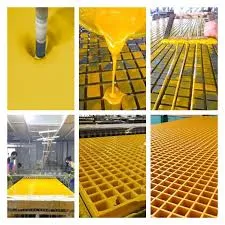
-
 Afrikaans
Afrikaans -
 Albanian
Albanian -
 Amharic
Amharic -
 Arabic
Arabic -
 Armenian
Armenian -
 Azerbaijani
Azerbaijani -
 Basque
Basque -
 Belarusian
Belarusian -
 Bengali
Bengali -
 Bosnian
Bosnian -
 Bulgarian
Bulgarian -
 Catalan
Catalan -
 Cebuano
Cebuano -
 China
China -
 China (Taiwan)
China (Taiwan) -
 Corsican
Corsican -
 Croatian
Croatian -
 Czech
Czech -
 Danish
Danish -
 Dutch
Dutch -
 English
English -
 Esperanto
Esperanto -
 Estonian
Estonian -
 Finnish
Finnish -
 French
French -
 Frisian
Frisian -
 Galician
Galician -
 Georgian
Georgian -
 German
German -
 Greek
Greek -
 Gujarati
Gujarati -
 Haitian Creole
Haitian Creole -
 hausa
hausa -
 hawaiian
hawaiian -
 Hebrew
Hebrew -
 Hindi
Hindi -
 Miao
Miao -
 Hungarian
Hungarian -
 Icelandic
Icelandic -
 igbo
igbo -
 Indonesian
Indonesian -
 irish
irish -
 Italian
Italian -
 Japanese
Japanese -
 Javanese
Javanese -
 Kannada
Kannada -
 kazakh
kazakh -
 Khmer
Khmer -
 Rwandese
Rwandese -
 Korean
Korean -
 Kurdish
Kurdish -
 Kyrgyz
Kyrgyz -
 Lao
Lao -
 Latin
Latin -
 Latvian
Latvian -
 Lithuanian
Lithuanian -
 Luxembourgish
Luxembourgish -
 Macedonian
Macedonian -
 Malgashi
Malgashi -
 Malay
Malay -
 Malayalam
Malayalam -
 Maltese
Maltese -
 Maori
Maori -
 Marathi
Marathi -
 Mongolian
Mongolian -
 Myanmar
Myanmar -
 Nepali
Nepali -
 Norwegian
Norwegian -
 Norwegian
Norwegian -
 Occitan
Occitan -
 Pashto
Pashto -
 Persian
Persian -
 Polish
Polish -
 Portuguese
Portuguese -
 Punjabi
Punjabi -
 Romanian
Romanian -
 Russian
Russian -
 Samoan
Samoan -
 Scottish Gaelic
Scottish Gaelic -
 Serbian
Serbian -
 Sesotho
Sesotho -
 Shona
Shona -
 Sindhi
Sindhi -
 Sinhala
Sinhala -
 Slovak
Slovak -
 Slovenian
Slovenian -
 Somali
Somali -
 Spanish
Spanish -
 Sundanese
Sundanese -
 Swahili
Swahili -
 Swedish
Swedish -
 Tagalog
Tagalog -
 Tajik
Tajik -
 Tamil
Tamil -
 Tatar
Tatar -
 Telugu
Telugu -
 Thai
Thai -
 Turkish
Turkish -
 Turkmen
Turkmen -
 Ukrainian
Ukrainian -
 Urdu
Urdu -
 Uighur
Uighur -
 Uzbek
Uzbek -
 Vietnamese
Vietnamese -
 Welsh
Welsh -
 Bantu
Bantu -
 Yiddish
Yiddish -
 Yoruba
Yoruba -
 Zulu
Zulu
fiberglass reinforced plastic tank
Understanding Fiberglass Reinforced Plastic Tanks
Fiberglass Reinforced Plastic (FRP) tanks have gained prominence in various industries due to their unique properties and advantages over traditional materials such as steel and concrete. These tanks are constructed using a combination of fiberglass and resin, creating a lightweight yet exceptionally strong structure suitable for a multitude of applications.
One of the primary benefits of FRP tanks is their resistance to corrosion. Unlike metal tanks that may rust over time when exposed to moisture or chemicals, FRP tanks maintain their integrity even in harsh environments. This makes them ideal for storing hazardous materials such as chemicals, wastewater, and corrosive substances, thereby enhancing safety and longevity in operations.
Understanding Fiberglass Reinforced Plastic Tanks
The design versatility of FRP tanks is another appealing aspect. These tanks can be manufactured in various shapes and sizes to meet specific requirements, accommodating custom specifications. This flexibility is particularly beneficial for industries needing tailored solutions for their storage needs, allowing for optimized space usage.
fiberglass reinforced plastic tank

In terms of insulation, FRP tanks excel due to their thermal properties. The composite materials can be engineered to provide adequate insulation for temperature-sensitive contents, protecting them from external temperature fluctuations. This feature is particularly advantageous in industries such as food processing and pharmaceuticals, where maintaining specific temperatures is crucial for product quality and safety.
Furthermore, the longevity of FRP tanks contributes to cost-effectiveness over time. While the initial investment may be higher compared to conventional materials, their durability and low maintenance requirements can lead to significant savings. FRP tanks do not require frequent replacements or extensive repairs, allowing businesses to allocate resources more efficiently.
Environmental benefits also come into play with FRP tanks. The manufacturing process can be designed to minimize waste, and the materials themselves are often recyclable. This aligns with the growing trend towards sustainability in industrial practices, making FRP tanks an environmentally responsible choice.
In conclusion, fiberglass reinforced plastic tanks represent a forward-thinking option for various industries. Their resistance to corrosion, lightweight nature, design flexibility, insulation properties, and long-term cost-effectiveness position them as a suitable solution for modern storage challenges. As industries continue to evolve, the adoption of FRP technology demonstrates a commitment to innovation and sustainable practices.
Latest news
-
Exploring the Benefits of Top Hammer Drifter Rods for Enhanced Drilling PerformanceNewsJun.10,2025
-
High-Precision Fiberglass Winding Machine for GRP/FRP Pipe Production – Reliable & Efficient SolutionsNewsJun.10,2025
-
FRP Pipes & Fittings for Shipbuilding - Corrosion-Resistant & LightweightNewsJun.09,2025
-
Premium FRP Flooring Solutions Durable & Slip-ResistantNewsJun.09,2025
-
Premium Fiberglass Rectangular Tanks Durable & Lightweight SolutionNewsJun.09,2025
-
Tapered Drill String Design Guide Durable Performance & UsesNewsJun.09,2025









